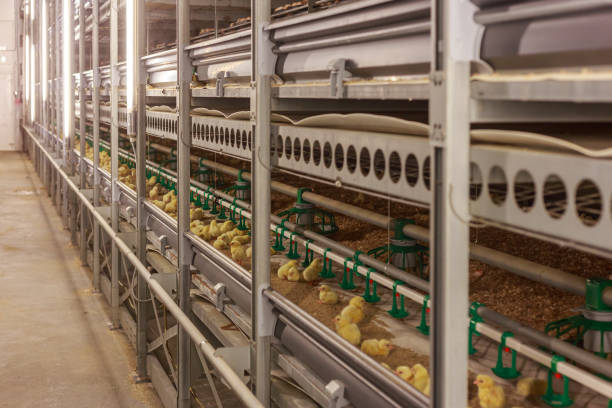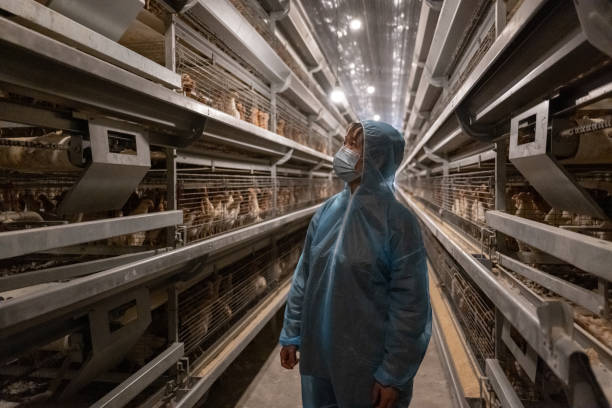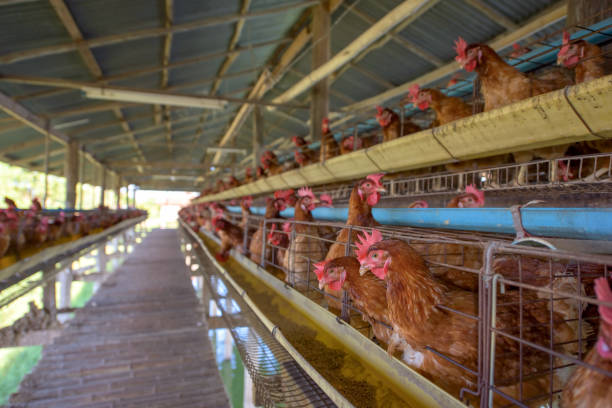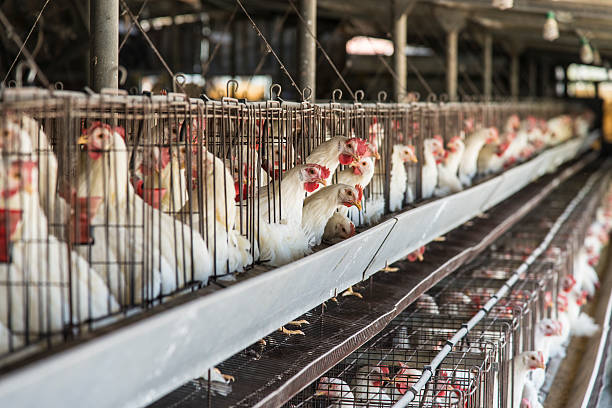
Large-Scale Poultry Farming in Tanzania: Opportunities and Best Practices
Large-Scale Poultry Farming in Tanzania: Opportunities and Best Practices
Tanzania, with its burgeoning population and rising demand for protein, presents a fertile ground for large-scale poultry farming. This sector holds immense potential for economic growth, job creation, and enhanced food security within the nation. However, realizing this potential requires a strategic approach that encompasses understanding of market dynamics, adoption of best practices in poultry management, and prudent investments in infrastructure and technology. This article will delve into the opportunities available in large-scale poultry farming in Tanzania and outline the best practices for establishing and maintaining a successful poultry operation.
The Poultry Market in Tanzania: A Landscape Ripe with Opportunity
The poultry market in Tanzania is primarily driven by the demand for chicken meat and eggs, both of which are staples in the Tanzanian diet. Several factors contribute to the growing demand:
Population Growth: Tanzania’s population is expanding rapidly, leading to a corresponding increase in the demand for food, including poultry products.
Rising Incomes: As the Tanzanian economy grows, disposable incomes are also increasing, allowing more people to afford protein-rich foods like chicken and eggs.
Urbanization: The trend of urbanization concentrates populations in urban centers, creating larger and more centralized markets for poultry products.
Changing Dietary Habits: There is a growing awareness of the nutritional benefits of poultry products, leading to a shift in dietary preferences.
These factors combine to create a favorable environment for large-scale poultry farming. Local production is often unable to meet the rising demand, leading to opportunities for entrepreneurs who can scale up production and efficiently deliver poultry products to the market.
Exploring the Opportunities in Large-Scale Poultry Farming
The large-scale poultry farming sector in Tanzania offers diverse opportunities, spanning various aspects of the value chain:
Broiler Production: Raising broiler chickens for meat is a fast-turnaround business that can generate profits quickly. Specialized broiler breeds grow rapidly and efficiently convert feed into meat.
Layer Production: Layer farming focuses on egg production. While it requires a longer initial investment period, the consistent demand for eggs provides a stable income stream.
Poultry Feed Production: Ensuring a steady supply of high-quality poultry feed is crucial for optimal growth and production. Establishing a feed mill or sourcing feed ingredients locally can be a lucrative venture.
Poultry Processing and Packaging: Processing and packaging add value to poultry products, improving shelf life and making them more appealing to consumers. This can include slaughtering, butchering, and packaging chicken meat, as well as egg grading and packaging.
Distribution and Marketing: Developing efficient distribution channels is vital for reaching consumers. This may involve establishing partnerships with retailers, restaurants, and other food service providers.
Manufacturing of Poultry Equipment: Investing in the manufacture and supply of chicken cages can contribute to promoting the development of poultry farming.
Understanding these opportunities and identifying the most suitable niche is the first step towards establishing a successful large-scale poultry farming business.
Best Practices for Successful Large-Scale Poultry Farming
Scaling up poultry farming requires more than just capital; it demands a comprehensive understanding of best practices in poultry management. Here’s a breakdown of critical elements:
Choosing the Right Breed:
The choice of breed is fundamental to the success of any poultry operation. It’s essential to select breeds that are well-suited to the Tanzanian climate and market demands.
Broilers: Popular broiler breeds include Cobb, Ross, and Hubbard. These breeds are known for their rapid growth rates, high feed conversion ratios, and good meat yield.
Layers: Common layer breeds include Lohmann Brown, Hy-Line Brown, and Bovans Brown. These breeds are known for their high egg production rates, good egg quality, and efficient feed utilization.
When selecting a breed, consider factors such as growth rate, egg production rate, disease resistance, and feed efficiency. Consulting with experienced poultry farmers and local agricultural extension officers is advisable.
Housing and Infrastructure:
Providing adequate housing is crucial for the health, welfare, and productivity of poultry. Large-scale farms require well-designed and constructed poultry houses that provide adequate space, ventilation, and protection from the elements.
Space Requirements: Ensure sufficient space for birds to move freely. Overcrowding can lead to stress, disease outbreaks, and reduced productivity.
Ventilation: Proper ventilation is essential for maintaining air quality, removing excess moisture, and preventing the buildup of harmful gases like ammonia. Natural or mechanical ventilation systems can be used depending on the farm size and climate.
Temperature Control: Maintaining a consistent temperature within the poultry house is important for bird comfort and performance. Heating and cooling systems may be necessary in extreme climates.
Lighting: Proper lighting is crucial for stimulating egg production in layers and promoting growth in broilers. Implement a lighting program that provides the appropriate light intensity and duration.
Consider investing in modern poultry equipment such as automatic feeding systems, drinking systems, and manure removal systems to improve efficiency and reduce labor costs.
Nutrition and Feeding:

Feed accounts for a significant proportion of the total cost of poultry production. Providing a balanced and nutritious diet is essential for optimal growth, egg production, and overall health.
Quality Feed: Use commercially available poultry feed or formulate your own feed using locally available ingredients. Ensure that the feed contains the necessary nutrients, including protein, carbohydrates, fats, vitamins, and minerals.
Feed Management: Provide feed ad libitum (free access) to broilers to maximize growth. For layers, follow a feeding program that meets their specific nutritional requirements at different stages of production.
Water: Clean and fresh water must be available to poultry at all times. Water is essential for hydration, digestion, and overall health.
Regularly analyze feed samples to ensure that they meet the required nutritional standards. Consider using feed additives such as enzymes, probiotics, and prebiotics to improve feed efficiency and gut health.
Health Management and Biosecurity:
Maintaining a healthy flock is essential for profitable poultry farming. Implementing a comprehensive health management program that includes vaccination, disease prevention, and biosecurity measures is crucial.
Vaccination: Vaccinate poultry against common diseases such as Newcastle disease, Gumboro disease, and fowl pox. Follow a vaccination schedule recommended by a veterinarian or poultry expert.
Biosecurity: Implement strict biosecurity measures to prevent the introduction and spread of diseases. This includes limiting access to the farm, disinfecting vehicles and equipment, and controlling rodent and insect pests.
Disease Monitoring: Regularly monitor poultry for signs of illness, such as decreased appetite, respiratory distress, and diarrhea. Consult with a veterinarian promptly if any health problems are detected.
Maintain accurate records of vaccinations, treatments, and disease outbreaks. Quarantine sick birds to prevent the spread of disease to the rest of the flock.
Waste Management:
Poultry farming generates significant amounts of waste, including manure, feathers, and dead birds. Proper waste management is essential for preventing environmental pollution and protecting public health.
Manure Management: Collect and store manure in a designated area. Manure can be used as fertilizer for crops or processed into compost.
Dead Bird Disposal: Dispose of dead birds properly by burying them, composting them, or incinerating them. Follow local regulations regarding dead bird disposal.
Wastewater Management: Treat wastewater from poultry houses before discharging it into the environment.
Implementing a waste management plan not only helps to protect the environment but also reduces the risk of disease outbreaks and improves the overall sustainability of the poultry farm.
Financial Management and Record Keeping:
Effective financial management is essential for the profitability and sustainability of large-scale poultry farming. Maintaining accurate records of income, expenses, and production data is crucial for making informed decisions and monitoring performance.
Budgeting: Develop a detailed budget that includes all anticipated income and expenses. Regularly review the budget and make adjustments as needed.
Cost Control: Identify areas where costs can be reduced without compromising productivity or quality.
Record Keeping: Maintain accurate records of feed consumption, egg production, mortality rates, and other key performance indicators.
Financial Analysis: Analyze financial data to identify trends, assess profitability, and make informed decisions about investments and operations.
Seek professional advice from accountants and financial advisors to ensure that the poultry farm is financially sound and sustainable.
Marketing and Sales:
Developing a strong marketing strategy is essential for selling poultry products and maximizing profits. This involves identifying target markets, developing effective marketing messages, and establishing efficient distribution channels.
Market Research: Conduct market research to identify consumer preferences, demand trends, and competitive pricing.
Branding: Develop a brand that is recognizable and trusted by consumers.
Distribution Channels: Establish relationships with retailers, restaurants, and other food service providers.
Marketing Communication: Use various marketing channels, such as advertising, social media, and public relations, to promote poultry products.

Focus on providing high-quality poultry products that meet consumer needs and expectations.
Embracing Technology and Innovation
Technology plays a crucial role in enhancing the efficiency and productivity of large-scale poultry farming. Embracing innovative technologies can help to reduce costs, improve bird welfare, and increase profitability.
Automated Feeding and Watering Systems: These systems reduce labor costs and ensure that poultry receive consistent and adequate nutrition and hydration.
Climate Control Systems: These systems maintain optimal temperature and humidity levels in poultry houses, improving bird comfort and performance.
Data Analytics: Analyzing data on feed consumption, egg production, and other key performance indicators can help to identify areas for improvement and optimize management practices.
Precision Farming Technologies: Technologies such as sensors and GPS can be used to monitor bird health, track feed consumption, and manage manure application more precisely.
Staying abreast of the latest technological advancements in poultry farming is essential for maintaining a competitive edge.
Navigating Challenges and Risks
While large-scale poultry farming offers significant opportunities, it also presents several challenges and risks:
Disease Outbreaks: Poultry are susceptible to various diseases that can cause significant losses.
Fluctuating Feed Prices: Feed prices can fluctuate significantly, impacting profitability.
Market Volatility: Demand and prices for poultry products can fluctuate, affecting revenue.
Competition: The poultry market can be competitive, with numerous producers vying for market share.

Regulatory Compliance: Poultry farms must comply with various regulations related to food safety, animal welfare, and environmental protection.
Developing strategies to mitigate these risks is essential for the long-term success of a large-scale poultry farming business.
Conclusion
Large-scale poultry farming in Tanzania presents a promising avenue for economic development and enhanced food security. By understanding market dynamics, adopting best practices in poultry management, and embracing technology and innovation, entrepreneurs can establish successful and sustainable poultry operations. While challenges and risks exist, proactive management and mitigation strategies can pave the way for a thriving poultry industry in Tanzania. The key lies in embracing knowledge, technology, and a commitment to quality and sustainability. As Tanzania continues to develop, the poultry sector is poised to play an increasingly important role in meeting the nation’s growing demand for protein and contributing to its economic prosperity.
